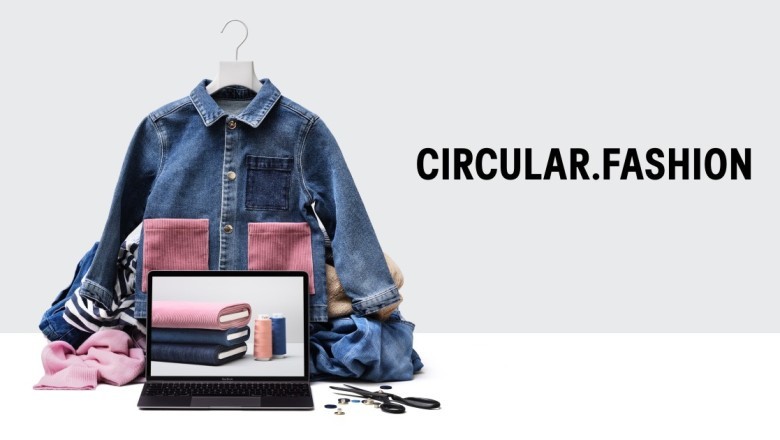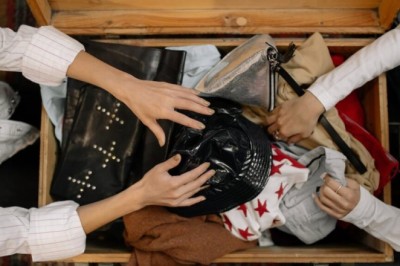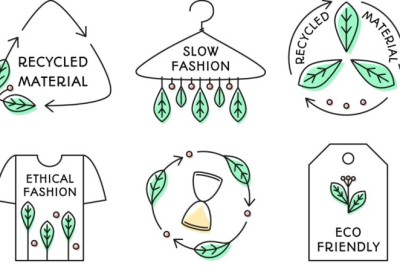views

Circular Fashion: Redefining the Lifecycle of Clothing through Reuse and Recycling
The fashion industry is undergoing a transformation driven by sustainability and innovation. One of the most significant shifts is the move towards circular fashion, a model that emphasizes the reuse and recycling of clothing to minimize waste and environmental impact. Circular fashion aims to redefine the lifecycle of garments, promoting practices that extend their use and value. This article explores the concept of circular fashion, its benefits, and the ways it is reshaping the future of the fashion industry.
Understanding Circular Fashion
Circular fashion is based on the principles of the circular economy, which advocates for a system where resources are kept in use for as long as possible, their maximum value is extracted, and products and materials are recovered and regenerated at the end of their service life. In the context of fashion, this means designing, producing, and consuming clothing in ways that allow for its reuse, repair, and recycling.
The Traditional Fashion Model
Traditionally, the fashion industry has operated on a linear model: produce, consume, and dispose. This approach has led to significant environmental issues, including excessive waste, pollution, and resource depletion. Fast fashion, characterized by the rapid production of inexpensive clothing to meet fleeting trends, has exacerbated these problems. Garments are often discarded after only a few wears, contributing to the approximately 92 million tons of textile waste generated annually.
The Shift to Circular Fashion
The shift to circular fashion is driven by the need to address these environmental challenges. It involves several key strategies:
- Design for Longevity: Creating clothing that is durable and timeless, reducing the need for frequent replacement.
- Material Innovation: Using sustainable and recyclable materials that can be easily repurposed.
- Reuse and Repair: Encouraging consumers to reuse, repair, and refurbish garments instead of discarding them.
- Recycling: Developing systems for collecting and recycling textiles to create new products.
- Business Models: Adopting new business models such as rental, resale, and subscription services that promote the continuous use of clothing.
Benefits of Circular Fashion
The benefits of circular fashion are multifaceted, impacting the environment, economy, and society.
Environmental Benefits
Circular fashion significantly reduces waste and conserves resources. By extending the lifecycle of clothing, less waste ends up in landfills, and the demand for raw materials decreases. Recycling textiles reduces the need for virgin materials, lowering the environmental impact associated with production. Moreover, sustainable materials and production processes minimize pollution and reduce carbon emissions.
Economic Benefits
Circular fashion can also drive economic growth and innovation. New business models, such as clothing rental and resale platforms, create additional revenue streams and job opportunities. Brands that embrace circular fashion can differentiate themselves in a competitive market, attracting environmentally conscious consumers. Additionally, the emphasis on quality and durability can lead to long-term cost savings for consumers.
Social Benefits
Socially, circular fashion promotes ethical practices and supports local communities. By prioritizing fair labor practices and transparent supply chains, the industry can improve working conditions and empower workers. Community-based initiatives, such as repair workshops and clothing swaps, foster a sense of community and encourage responsible consumption.
Examples of Circular Fashion in Action
Several brands and organizations are leading the way in circular fashion, demonstrating innovative approaches to sustainability.
Patagonia
Patagonia is renowned for its commitment to environmental responsibility. The company’s Worn Wear program encourages customers to buy used Patagonia gear, trade in their old items for store credit, and repair damaged clothing. This initiative extends the life of garments and reduces waste.
H&M
H&M has launched several initiatives to promote circular fashion. The company’s Garment Collecting program allows customers to bring unwanted clothing (from any brand) to H&M stores for recycling. H&M also invests in developing sustainable materials and circular design techniques through its Conscious Collection.
The RealReal
The RealReal is a luxury consignment platform that promotes the resale of high-end fashion items. By facilitating the resale of pre-owned luxury goods, The RealReal extends the lifecycle of clothing and reduces the demand for new products.
Eileen Fisher
Eileen Fisher’s Renew program collects, repairs, and resells used Eileen Fisher clothing. The company also explores innovative recycling techniques to create new garments from old ones. Eileen Fisher’s focus on quality and sustainability exemplifies the principles of circular fashion.
Challenges and Future Directions
While circular fashion offers numerous benefits, it also faces challenges. Changing consumer behavior and perceptions is crucial, as many people are accustomed to the convenience and low cost of fast fashion. Developing efficient and scalable recycling technologies is another hurdle, as the current infrastructure is often inadequate.
Education and awareness are key to driving the adoption of circular fashion. Consumers need to understand the environmental impact of their clothing choices and the benefits of sustainable practices. Brands and policymakers must collaborate to create supportive frameworks and incentives for circular fashion.
Conclusion
Circular fashion represents a transformative approach to the fashion industry, one that prioritizes sustainability and responsibility. By redefining the lifecycle of clothing through reuse and recycling, circular fashion can mitigate environmental impact, drive economic growth, and promote ethical practices. As consumers, brands, and governments embrace this model, the future of fashion looks increasingly sustainable and innovative. The shift to circular fashion is not just a trend; it is a necessary evolution for the health of our planet and the well-being of future generations.











Comments
0 comment